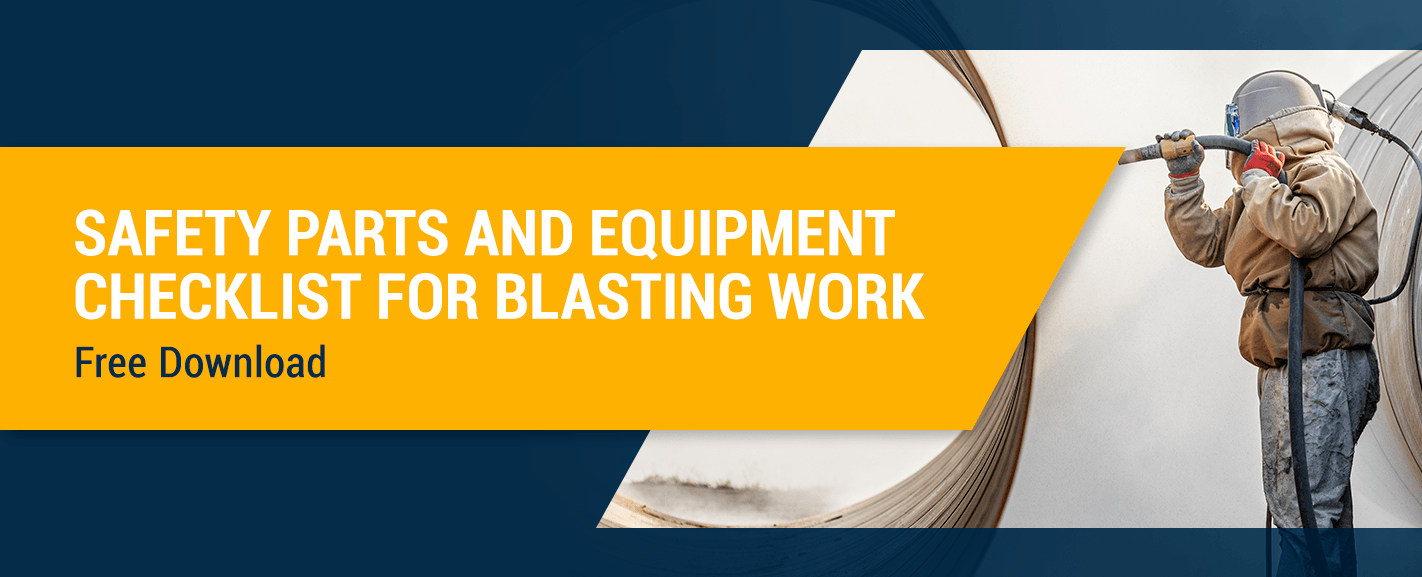Ningbo Yinzhou Leisheng Machinery Co.,Ltd , https://www.nblscasting.com
Abrasive Blasting Safety Checklist
Updated: March 20, 2023
Abrasive blasting is a common process used across various industries, such as shipbuilding, automotive, and construction. It helps in preparing surfaces for painting, sealing, or coating by removing rust, old paint, or other contaminants. However, this powerful technique requires strict safety measures to protect workers from potential hazards.
To ensure a safe working environment, it's essential that employees wear the correct personal protective equipment (PPE) and that all blasting equipment is regularly inspected and maintained. Proper safety gear not only protects workers but also allows them to perform their tasks efficiently with confidence.
In this guide, we’ll walk you through the key safety considerations for abrasive blasting, including the most common hazards, the necessary PPE, and how to inspect your equipment before starting any project.
**What Is Abrasive Blasting?**
Also known as sandblasting, abrasive blasting uses compressed air or water to propel high-pressure streams of abrasive materials at a surface. This method is effective for cleaning, smoothing, or preparing surfaces for further treatment. It’s widely used in industrial settings due to its speed and effectiveness.
**Common Materials Used in Abrasive Blasting**
There are several types of abrasive materials available, each suited for different applications. Some of the most commonly used ones include:
- **Glass beads**: Eco-friendly and free of silica, ideal for delicate surfaces.
- **Crushed glass**: Aggressive cutting action for heavy coatings.
- **Aluminum oxide**: Versatile and suitable for rust removal and etching.
- **Plastic media**: Lightweight and less aggressive, good for softer substrates.
- **Silicon carbide**: Hard and fast-cutting, reusable for cost efficiency.
- **Steel shot and grit**: Durable options for heavy-duty applications.
- **Starblastâ„¢**: Uniform blasting patterns with low silica content.
- **Black Beauty®**: Chemically inert and effective for surface preparation.
- **Ground walnut shells and corn cobs**: Biodegradable and gentle on surfaces.
**Hazards of Abrasive Blasting**
Despite its efficiency, abrasive blasting comes with several risks, including:
- **Air contaminants**: Inhaling dust from silica or other particles can cause serious health issues.
- **Loud noise**: Prolonged exposure to high noise levels can lead to hearing loss.
- **High-speed particles**: Can cause injuries if not properly protected against.
- **High-pressure streams**: Risk of severe injury if not handled carefully.
- **Static electricity**: Potential for electric shocks if not grounded.
- **Vibration**: Long-term use may lead to hand-arm vibration syndrome.
- **Slips and falls**: Due to debris on the floor.
- **Heat exposure**: PPE can contribute to heat stress during long operations.
**Essential Safety Equipment Checklist**
To minimize these risks, the following PPE should be included in every abrasive blasting operation:
- **Respirator**: Protects against airborne particles. Choose one with built-in hearing protection if needed.
- **Climate control device**: Helps manage temperature inside the respirator.
- **Eye and face protection**: Essential for anyone near the blasting area.
- **Gloves**: Heavy-duty gloves made of durable material to prevent abrasion and reduce vibration impact.
- **Apron or blast suit**: Provides full-body protection from flying debris.
- **Safety shoes**: Non-slip, steel-toed footwear to protect feet from falling objects.
- **Hearing protection**: Ear muffs or earplugs to reduce noise exposure.
**How to Begin Every Project Safely**
Before starting any abrasive blasting project, follow a thorough pre-checklist to ensure everything is safe and ready:
**Blasting Equipment Inspection**
- Check the air compressor for proper maintenance and pressure relief valve.
- Inspect the blast vessel for damage, moisture, and leaks.
- Ensure all valves, hoses, and fittings are in good condition and secure.
- Verify the blast nozzle is undamaged and sized correctly.
**Abrasive Material Check**
- Confirm the material is compatible with the equipment.
- Ensure it is clean, dry, and within OSHA guidelines.
**Object and Environment Safety**
- Secure the object being blasted.
- Establish a safe blasting zone and check for tripping hazards.
- Ensure good lighting, ventilation, and no flammable fumes nearby.
**PPE Inspection**
- Check that all PPE is in good condition and meets safety standards.
- Make sure respirators cover the head, neck, and shoulders.
- Ensure eye protection, gloves, and footwear are intact.
**Personal Hygiene Practices**
OSHA recommends the following hygiene practices:
- No eating, drinking, or smoking in blasting areas.
- Provide wash stations for frequent cleaning.
- Remove contaminated clothing before eating or showering.
- Offer showers and change areas after shifts.
- Keep contaminated PPE away from clean zones.
**Contact Finishing Systems**
At Finishing Systems, we provide high-quality abrasive blasting equipment, safety gear, and expert support to help you work safely and efficiently. Whether you need blasting media, portable equipment, or training, our team is here to assist.
**Download the Checklist**
If you're looking for a comprehensive safety checklist for abrasive blasting, download it now and ensure your team follows best practices for safety and productivity.
**Abrasive Blasting Safety Checklist**